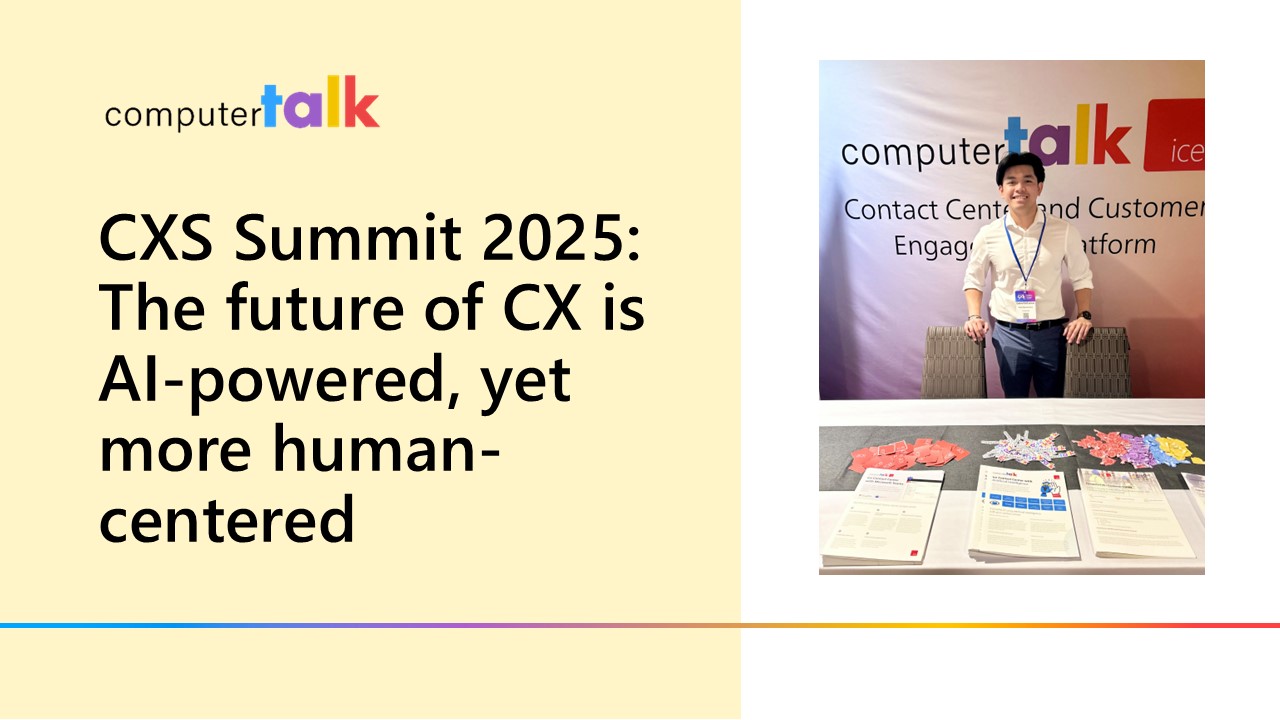7 Steps Supervisors Need to Take to Manage Agents in a Hybrid Work Environment
by Anastasia Micic | Published On April 28, 2023 | Last Updated October 17, 2025
![Hybrid Workplace - GettyImages-1380612424 [Converted]](https://computer-talk.com/images/default-source/animations/hybrid-workplace---gettyimages-1380612424-converted-.jpg?sfvrsn=fa8d45b_1)
Learn 7 key strategies for managing contact center agents in a hybrid work model. Boost engagement, collaboration, and team performance.
The workplace continues to evolve. As of early 2025, 60% of remote workers report that their employers are requiring more time in the office. Many organizations have now established hybrid schedules as the new standard, with typically 2-4 days per week on-site while maintaining some remote flexibility.
For contact centers, this shift impacts how agents work, how supervisors lead, and how company culture develops. With the right approach, supervisors can create a hybrid workplace that combines the collaboration of in-office days with the focus and flexibility of remote work.
What is a Hybrid Work Environment?
A hybrid work environment allows agents to split their time between remote and in-office work. This flexibility lets them balance personal and professional responsibilities while maintaining meaningful in-person connections with colleagues and supervisors.
For contact centers, this model has become easier to manage thanks to cloud contact center solutions, which allow agents to access tools and handle interactions from anywhere. The hybrid workplace not only supports business continuity but also enhances employee engagement and retention when implemented thoughtfully.
7 Steps Supervisors Can Take to Manage Agents in a Hybrid Work Environment
Here are seven strategies for leaders to keep their hybrid contact center teams engaged, productive, and connected.
1. Set Clear Expectations to Manage Hybrid Contact Center Teams
Ambiguity is the enemy of engagement. Supervisors should clearly define why agents are coming into the office and what those days are meant to accomplish, whether that's for collaboration, training, team meetings, or customer experience coaching.
Communicate expectations early and often. Regular updates via chat, email, or meetings help keep everyone aligned with scheduling changes, performance goals, and office policies. Encourage agents to raise questions and share feedback openly to foster trust and transparency.
How to set clear expectations:
- Outline objectives for both remote and in-office days
- Communicate schedules and expectations in advance
- Share performance metrics openly so everyone knows what success looks like
- Reinforce guidelines consistently across all agents
2. Schedule Regular Team Meetings
Whether weekly or monthly, regular meetings provide opportunities to share updates, address challenges, and celebrate successes.
How to make meetings engaging:
- Create an agenda to stay on track
- Leave time for questions or updates
- Follow up with next steps to ensure accountability
Consistent meetings help agents feel supported, aligned, and connected to the broader goals of the organization.
3. Gather and Act on Employee Feedback
Supervisors should regularly gather feedback on how the hybrid model is working in practice. Use one-on-one check-ins, team discussions, or anonymous surveys to identify what's working and where improvements are needed.
This feedback loop helps uncover challenges such as concerns, scheduling conflicts, or technology gaps. It also shows agents that their input matters. When employees feel heard, engagement and satisfaction rise.
How to gather valuable feedback:
- Conduct quick pulse surveys every quarter
- Use one-on-one sessions to dive deeper into personal concerns
- Share results transparently and outline actions being taken
Follow-up actions:
- Prioritize recurring issues
- Communicate changes based on feedback
- Acknowledge agent input publicly when possible
4. Recognize and Reward Adaptability
Recognition goes a long way in keeping agents motivated. As your team adjusts to new ways of working, make an effort to celebrate those who maintain performance and bring a positive attitude to hybrid work.
Ways to recognize success:
- Highlight achievements in meetings or newsletters
- Send personal thank-you notes or shout- outs
- Offer small incentives or development opportunities
How to make recognition impactful:
- Be specific about what behavior or results you’re recognizing
- Deliver praise promptly
- Ensure recognition feels fair and inclusive across both remote and in-office teams
Recognition reinforces positive behaviors and helps build a supportive, high-performing culture.
5. Use Real-Time Data to Track Performance
With hybrid work, it's essential to measure performance consistently across remote and in-office days. Tools like iceMonitor provide real-time visibility into key performance indicators such as availability, call handling time, and customer satisfaction.
By monitoring data trends, supervisors can identify where agents need support, redistribute workloads, and ensure queues are properly staffed. Data-driven management builds fairness and trust in hybrid teams.
How to apply performance data effectively:
- Review dashboards regularly and discuss findings in team meetings
- Use metrics to coach, not punish, underperforming agents
- Balance quantitative data (KPIs) with qualitative feedback (customer comments)
- Celebrate data-driven improvements
6. Make In-Office Days Purposeful
One of the biggest frustrations agents have about returning to the office is feeling their time could have been better spent at home. Supervisors can change that by making in-office days meaningful and collaborative.
Plan for activities like team brainstorming, mentorship, or hands-on training - anything that benefits from face-to-face interaction. Avoid scheduling in-office days just for solo work that can be done remotely.
Many contact centers even designate one common in-office day each week to foster connection and teamwork. For example, here at ComputerTalk we have introduced "Workday Wednesdays" as the one day of the week when all staff must be in the office.
How to make office days purposeful:
- Run team workshops of skill-building sessions
- Pair new hires with mentors for shadowing
- Conduct in-person feedback sessions
- Host team lunches or brainstorming sessions
7. Rebuild Culture in a Hybrid Work Model
Company culture thrives on human connection. Hybrid work can sometimes weaken that sense of belonging, but in-office days are an opportunity to rebuild it.
It’s time to bring back old office traditions or start new ones. It seems like we have forgotten the importance of connecting with our colleagues on a personal level. Potlucks, trivia sessions, holiday parties, or other after-work activities are a great way to increase socialization within your organization. Make sure these events and activities are also inclusive of those operating remotely by offering an option to join virtually.
How to strengthen culture:
- Host hybrid-friendly social events with virtual games or breakout rooms
- Encourage team-led initiatives like charity drives or wellness challenges
- Create shared rituals – weekly shoutouts, internal newsletters, or recognition boards
- Foster cross-department connections through joint projects or lunches
Leading in the New Hybrid Workplace
The hybrid work model is here to stay. While it presents challenges like balancing flexibility with structure, it also offers opportunities for stronger collaboration, improved engagement, and a healthier work-life balance.
By following these seven steps, supervisors can lead with clarity and empathy, ensuring their hybrid contact center teams remain motivated, connected, and high performing.
Looking to elevate agent engagement across hybrid teams? Dive into our guide on contact center gamification for practical ideas and strategies.
More from our blog
 The CXS Summit 2025 was both exciting and eye-opening. As someone still early in my career and new to the CX industry, I went in hoping to better understand the greatest challenges organizations are facing in CX. What I took...
The CXS Summit 2025 was both exciting and eye-opening. As someone still early in my career and new to the CX industry, I went in hoping to better understand the greatest challenges organizations are facing in CX. What I took...
 ComputerTalk can be described as a 35-year-old start-up, characterized by its dynamic environment and reliance on fresh graduates. My journey with ComputerTalk began as an enthusiastic new graduate eager to embark on my career. Now, approaching my third year, I...
ComputerTalk can be described as a 35-year-old start-up, characterized by its dynamic environment and reliance on fresh graduates. My journey with ComputerTalk began as an enthusiastic new graduate eager to embark on my career. Now, approaching my third year, I...
16e46880-dade-4897-82a1-1cb60fce72fd.jpg?sfvrsn=52c67b05_1) At Enterprise Connect 2025, the evolving role of AI in customer experience (CX) took center stage. The event highlighted the importance of a holistic CX approach, where AI plays a key role in enhancing customer journeys.
At Enterprise Connect 2025, the evolving role of AI in customer experience (CX) took center stage. The event highlighted the importance of a holistic CX approach, where AI plays a key role in enhancing customer journeys.

